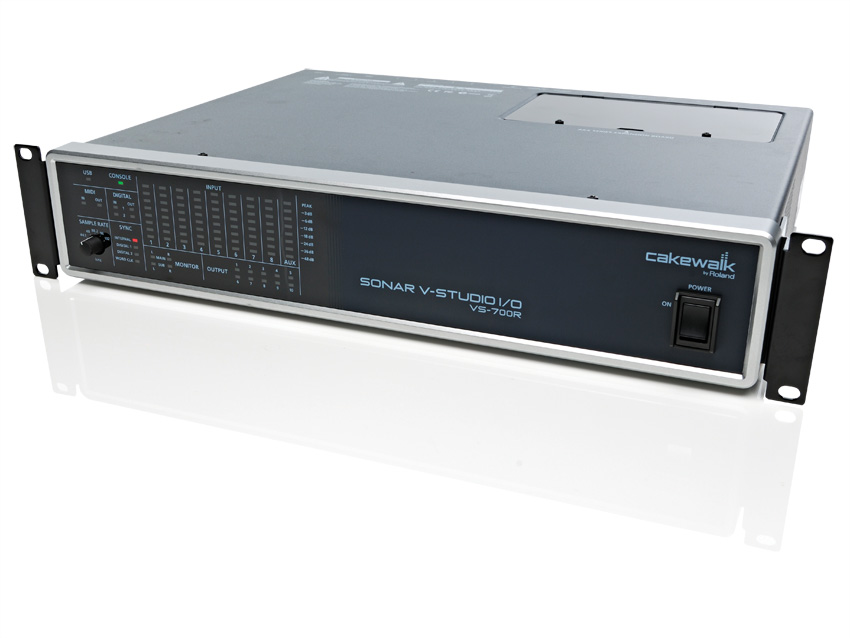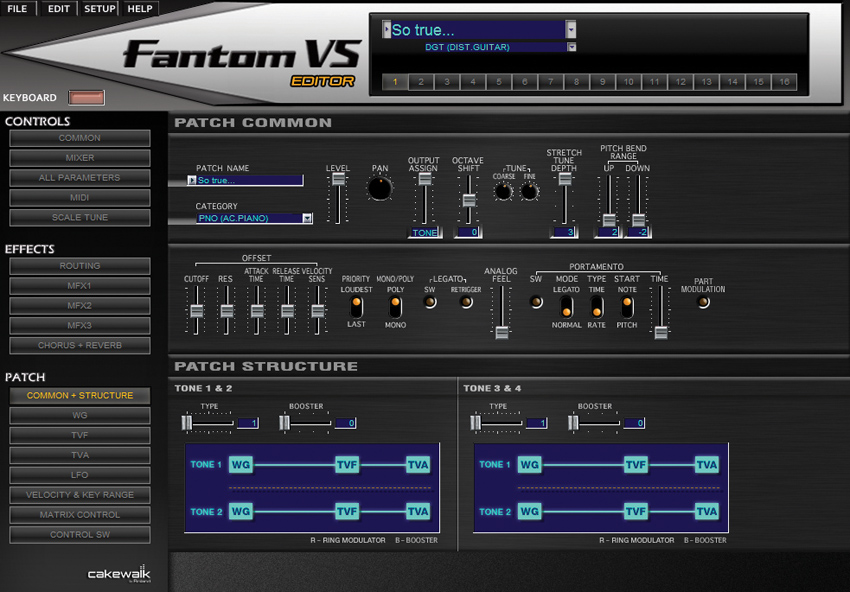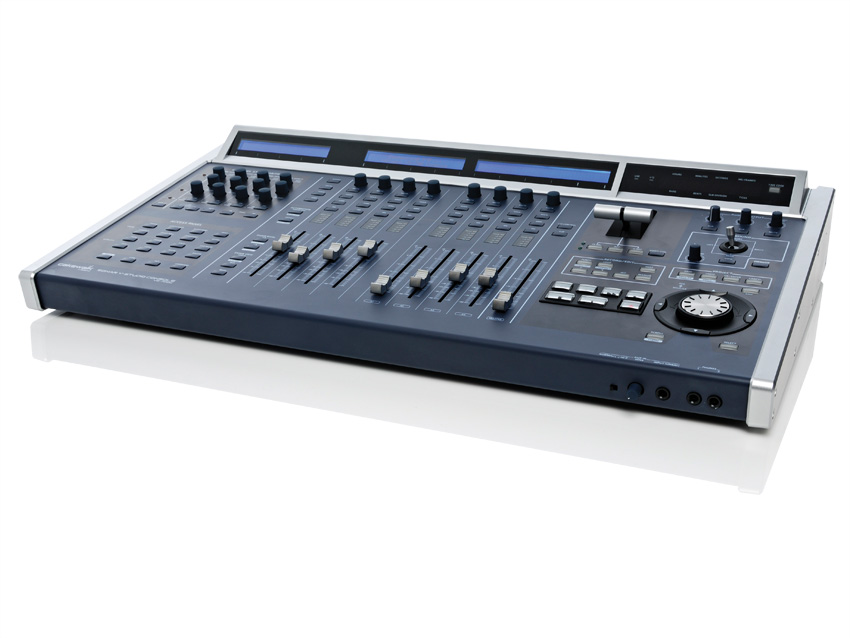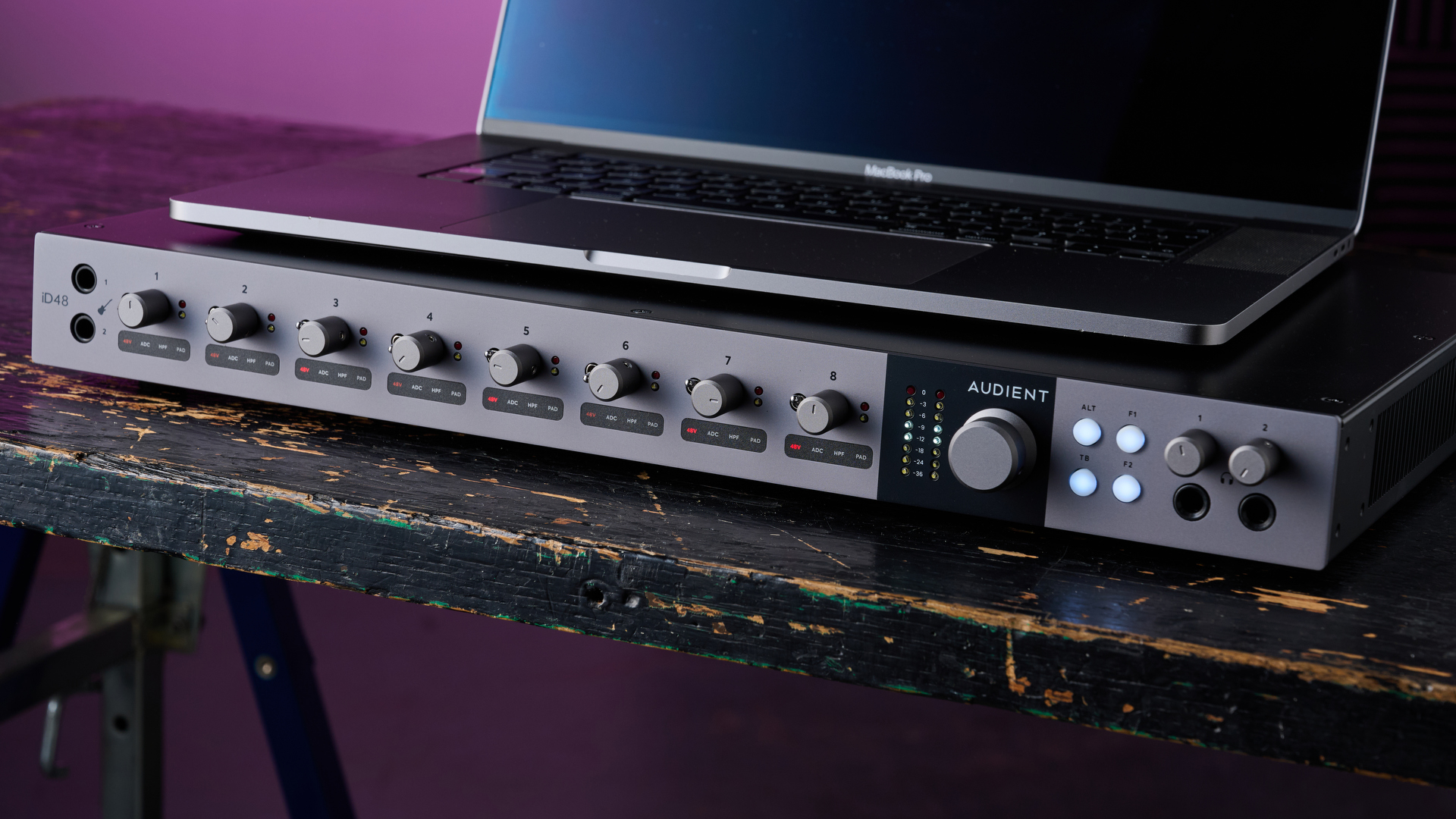MusicRadar Verdict
If you're a serious Sonar user with four grand to spare, the V-Studio 700 is one of the best ways in which to spend it.
Pros
- +
Thoroughly professional grade I/O. A button for everything, and then some! The Fantom V sounds terrific. Comprehensive control over Sonar.
Cons
- -
Costs a pretty penny. Setup not totally plug and play.
MusicRadar's got your back
V-Studio. The name is familiar, and the logo more so, for this is a collaborative effort between Cakewalk and its parent company Roland, who started pumping out standalone, hard disk-based V-Studios over a decade ago.
Thankfully, things have progressed in the interim, and most of us are now using computer-based systems, and thus the V-Studio 700 is a hardware front-end for Cakewalk's Sonar DAW (Sonar 8 Producer edition is included in the standard package).
It feels like a Roland product through and through, from the sleek styling of the console's controls to the built-in Fantom VS synthesiser, complete with an ARX Series expansion slot.
The V-Studio 700 consists of two integrated hardware devices: the rackmountable VS700R and the expansive VS-700C console. The former houses the Fantom VS hardware and provides the system with plenty of connectivity.

In detail
Overall, connectivity includes main and sub (as in secondary, not subwoofer) monitor outputs via stereo pairs on XLR and 1/4-inch jacks respectively; two headphone outs; 10 line outs on 1/4-inch balanced jack; and eight inputs, each available as an XLR or 1/4-inch jack, with its own preamp (including per-channel phantom power) and digital compressor.
There's also word clock, AES/EBU and S/ PDIF I/O, as well as a pair of optical ADAT ports and MIDI In and Out sockets. Connection to your computer is via USB 2.0.
The VS700C console connects to the VS700R with a locking cable and is a thoroughly pro control surface with three backlit LCD strips and a 7-segment LED display across the top to give visual feedback.
A bank of nine assignable, 100mm motorised faders (one is for the Master channel) occupies the central area. Each of the channel faders naturally has accompanying mute, solo and arm buttons. One slight annoyance is that direct monitoring has to be configured through software rather than using the VS700C, though Cakewalk says this is to be addressed in a future update.
"Transport controls include a jog/shuttle wheel and a T-bar throttle that would look at home in the transporter room on the Starship Enterprise."
There are gain pots for each headphone out and one for the sub/main monitor level, with switches to optionally send the sub signal to the phones, and to mute the monitor out. Such touches illustrate that Cakewalk sees the system as the hub for a pro recording setup.
Transport controls include a jog/shuttle wheel and a T-bar throttle that would look at home in the transporter room on the Starship Enterprise, with buttons to select its current function: front-to-rear balance in surround setups; control of an ACT parameter; or the opacity of Sonar's X-Ray feature. Additionally, there is a surround panner joystick.
To the left of the channels, you'll find the Channel Strip Control panel, which harbours 12 pots that can provide control over EQ, send or ACT parameters (ACT is basically Sonar's 'automap' functionality). The knobs remap and the LCD screen shows the relevant labels and values.
The Access Panel resides just below the Channel Strip Control section, and offers instant, mouse-free access to common functions; for instance, you can call up the Piano Roll, the Console View or the Synth Rack. Edit functions such as Cut, Fade, Split and Delete are also here, along with access to your markers.
The modifier keys add another four layers of functionality, and there are dedicated buttons for Save, Undo (or Redo, if you hold Shift), OK/Enter and Cancel.
In use
There have been plenty of attempts to put the stuff on our screens beneath our fingertips, though with the exception of costly Pro Tools systems, few are as feature-packed as the VS700C. However, that extended feature set means there is, naturally, a certain amount of complexity to get one's head around.
The task isn't helped by the initial setup routines - quite frankly, we were left scratching our heads on a couple of occasions, especially when trying to configure Sonar's MIDI I/O.
Thankfully, once configured, it was all plain sailing. Within hours, we found that our usual approach had changed and we were zipping around the surface of the VS700C, rather than reaching for the mouse. The mouse is still more convenient for certain editing tasks, but the console is easier and faster for the majority of basic recording and mixing jobs.
Like most add-on mix controllers, the channel faders are in banks of eight. We couldn't help but wish there were another set of faders, but that would naturally have added further to the cost.
Nevertheless, the console is smooth, responsive and professional - we'll be loathe to revert to the mouse when Cakewalk demands the return of the V-Studio! One last point to note: the VS-700CS can operate as a Mackie Control device, for use with DAWs other than Sonar.
Fantom-powered
The onboard Fantom VS is a hardware synthesizer that is integrated into your software environment via a plug-in interface. Being a hardware synth, there's a finite amount of processing power available to the instrument, meaning a limited number of voices (128), and only a single instance can be used at one time.
On the flip side, it won't tax your CPU while delivering the sort of detailed and sophisticated sound you'd expect from Roland. Those sounds come in the form of 1400 fully editable presets that cover virtually every imaginable genre.
We wish we could say that the interface makes patching a no-brainer, but this isn't the case. It's spread across no less than 18 tabbed pages, each devoted to a specific aspect of the instrument's architecture. You'd expect a few windows with a synth of this level of depth, but 18 is pushing it.

We encountered some bizarre behaviour running the editor under Vista 64 (though a hotfix has now become available), but niggles aside, it's a great-sounding synth, and adds value to the V-Studio 700 setup, though we imagine that some would have preferred the option to forego the Fantom VS and save a chunk of change.
Summary
So is it all worth the hefty price tag? If you're doing business professionally and Sonar is your host of choice, then yes, most assuredly. With the increased speed and improvements to your workflow, the system will pay for itself in no time.
For the serious hobbyist or semi-pro, it can still make sense, as the price is in keeping with the total cost of building a similarly outfitted system piecemeal. Take money out of the equation and there's no doubt about it: the V-Studio 700 is a dream machine that vastly enhances the Sonar experience.
Computer Music magazine is the world’s best selling publication dedicated solely to making great music with your Mac or PC computer. Each issue it brings its lucky readers the best in cutting-edge tutorials, need-to-know, expert software reviews and even all the tools you actually need to make great music today, courtesy of our legendary CM Plugin Suite.
“It has the ingenious ability to give you easy routing to external hardware with no re-patching”: Audient iD48 review
“If this was real, it would be really impressive. But since it’s not real, it’s really impressive": Watch the bonkers four-note piano
Watch UK electronic artist Lawrence Hart build a track from scratch in his hardware-stuffed studio











